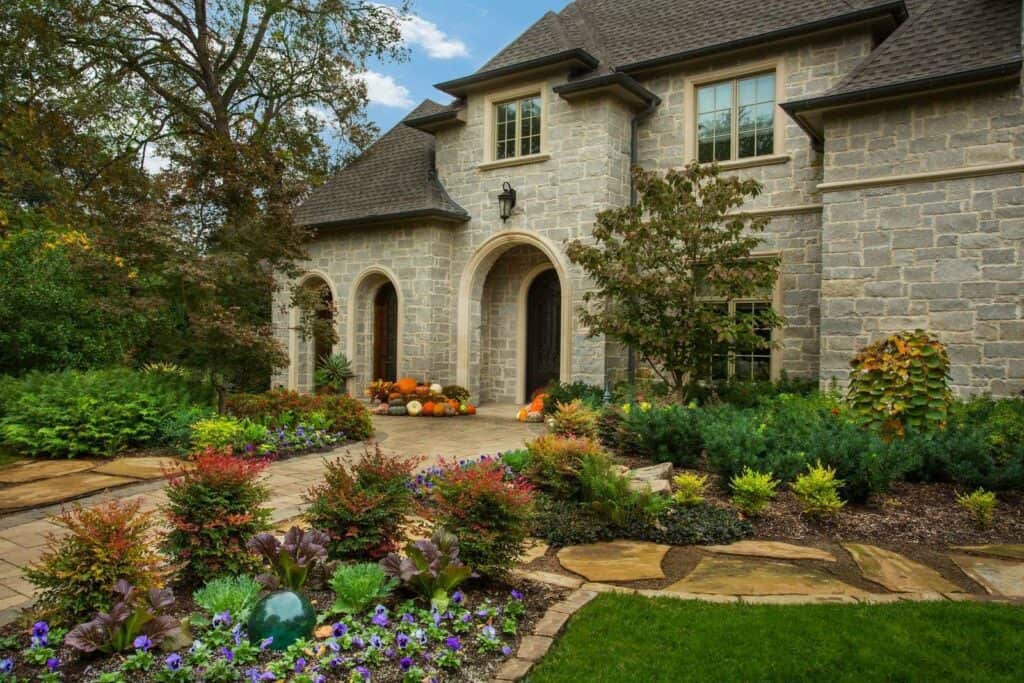Landscape Design Things To Know Before You Buy
Landscape Design Things To Know Before You Buy
Blog Article
Little Known Facts About Landscape Design.
Table of ContentsLandscape Design Can Be Fun For AnyoneLandscape Design Things To Know Before You Get ThisThe 15-Second Trick For Landscape DesignThe smart Trick of Landscape Design That Nobody is DiscussingLittle Known Facts About Landscape Design.
Formal design motif. Credit: Gail Hansen, UF/IFAS The yard is an expansion of the home where a variety of activities happen. A lawn can normally be split into 3 areas: public (the front yard), exclusive (the back backyard), and solution (usually the side lawn). The location of task areas depends primarily on the type of area, the size of room required, the kind of activity, and the desired proximity to various other tasks and frameworks.The outside wall surface of the house often works as the initial wall or beginning factor of an outside room. Incompatible usages should be divided, and associated tasks, such as cooking and eating, ought to be placed together to make the backyard a lot more efficient and enjoyable. When making use of hardscape to produce areas, use building and construction material similar to that made use of in your house for connection from the home right into the garden.
Connected rooms. Credit Scores: Gail Hansen, UF/IFAS Making use of similar hardscape functions and duplicating plants pulls the eye around the yard. Essential factors in the process can be stressed with plantings or attributes that draw focus and encourage movement in a certain direction. Moving along the path takes a person from one location to the following and permits the user to have a variety of experiences.
Little Known Questions About Landscape Design.

For emotional comfort plants are used as physical or suggested barriers for personal privacy and safety. Physical barriers block both the view and access to a space and include fencings, walls and plant hedges. Suggested obstacles, commonly low expanding plants, block access but not the view (Number 9). Various other features of plants consist of cleansing the air, avoiding erosion and dirt loss, preserving moisture in the soil, and returning organic matter to the dirt.
Physical and suggested barriers. Credit: Gail Hansen, UF/IFAS For these factors, the kinds of plants to be made use of (such as trees, bushes, or groundcovers) should be picked in the early phases of planning (Landscape Design). Plant kinds are chosen for their practical abilities to make sure that their future function and required area can be taken into consideration at the very same time

Some Known Details About Landscape Design
Each plant mass is in front of, behind, or alongside, one more mass. Figure 11. Horizontal plant layers. Credit Score: Gail Hansen, UF/IFAS Figure Click Here 12. Vertical plant layers. Landscape Design. Credit: Gail Hansen, UF/IFAS Repeating plants within a mass and repeating masses with similar plants links the garden with each other. The private plant characteristics need to be considered to efficiently layer and mass plants.
All plant make-ups start with the major framework plants, the big, mainly evergreen history plants-such as the click for more trees and big bushes. These plants different or enframe areas, manage the size of the area, and offer the beginning point for selecting the appropriate characteristics of the 2nd layer, midground plants, for massing and infill.
Vital points in the yard need to be highlighted by the usage of one-of-a-kind plants, distinctive frameworks, or garden ornaments. Marking thresholds or entrances to spaces can be finished with entrances, arbors, and actions, or via making use of special and vibrant plants. The form and/or design theme of the yard will typically help figure out the vital points and exactly how they need to be highlighted.
Other crucial areas in the lawn are focal points, which is used to visually arrange a landscaped area. Various point of views or point of views can expose various structures in the landscape that might need a variety of focal points.
What Does Landscape Design Mean?

Number 13. Plant types. Credit Scores: Gail Hansen, UF/IFAS After form, appearance is the next dominant attribute of a plant; crude, tool and great structures can be utilized for comparison and emphasis in the landscape. Form and texture both trump color in the garden for the majority of the year. However, throughout particular periods, color will be one of the most recognizable feature of the yard.
The enjoyable aroma of plants, the noise of wind in the straight from the source trees, the sound and appearance of water, and the colors and textures of sculptures, pots and garden furnishings all contribute to the experience of the garden. One information that is commonly neglected is the effect of light on the aesthetics of the plants.

The Buzz on Landscape Design
It is necessary to know the ultimate fully grown dimension of plants so they can be positioned in the right area and spaced effectively when they are mounted. Giving plants room to grow is a difficulty since the common fully grown dimension is usually based upon optimum expanding problems and the ecological problems of a website might cause a plant to grow larger or stay smaller.
Report this page